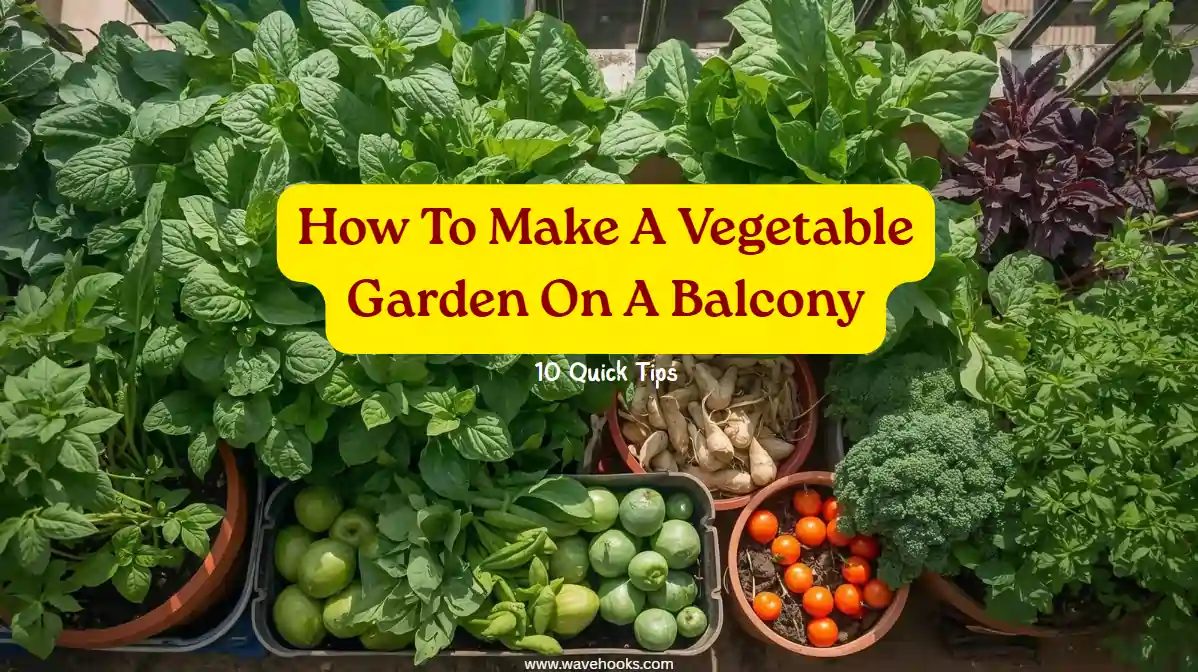How to make a vegetable garden on a balcony wasn’t on my mind until pigeons claimed mine as their hangout.
The mess grew so bad that I nearly gave up and thought of turning the balcony into a dumping zone for random storage.
But one morning, it struck me, why waste this space? Instead of locking it away, I could transform it into something green and alive with plants.
That small thought changed everything. I started experimenting with pots, soil, and seeds, and slowly, my dull balcony became a tiny little garden.
In this guide, I’ll share the exact steps I followed so you can do the same.
Things to Consider for Vegetable Garden on a balcony
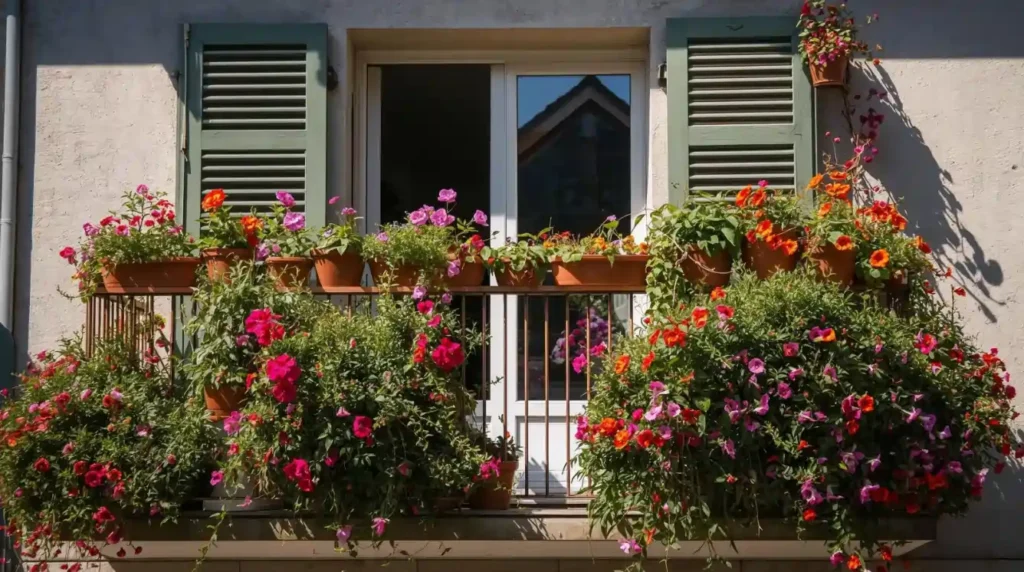
When I began figuring out how to make a vegetable garden on a balcony, I realized excitement alone wasn’t enough, the space had its own rules.
Here’s what I learned the hard way:
1. Sunlight matters: I once tucked a pot of spinach into a shaded corner, only to watch it wilt. Vegetables need at least 5–6 hours of direct light, so mapping sun spots saved me later.
2. Wind can be tricky: My balcony turned into a wind tunnel, toppling lightweight pots. Heavier containers and sheltered corners made a huge difference.
3. Drainage is non-negotiable: The first time water dripped onto my neighbor’s laundry, I knew trays and proper drainage weren’t optional.
4. Weight limits exist: Loaded soil, pots, and water add up. Keeping things balanced kept my balcony and my peace of mind safe.
Suggested Read: Do You Need Nutrients After Repotting A Indoor Plants? 10 Facts
how to grow a vegetable garden on a balcony
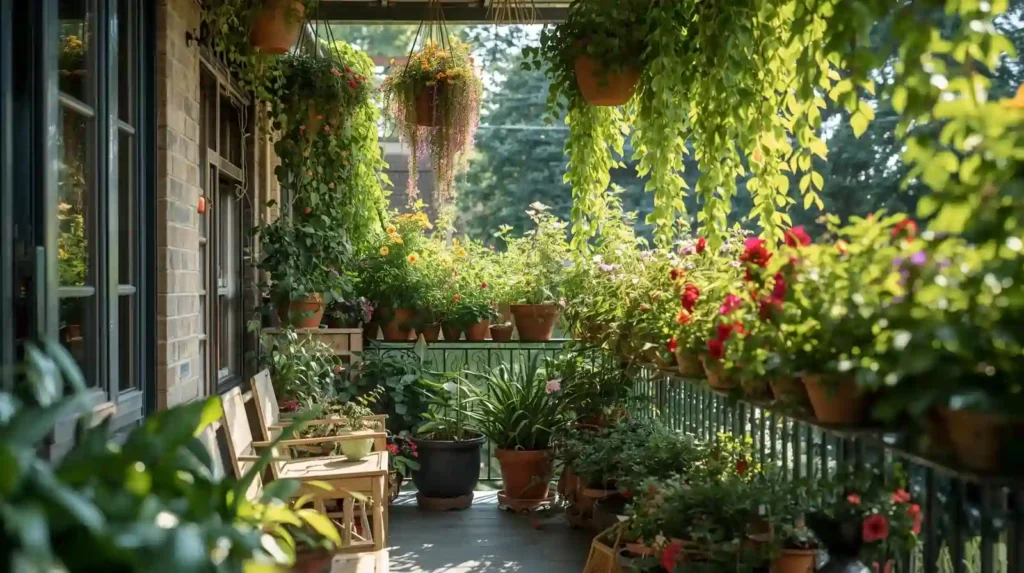
When I was learning how to make a vegetable garden on a balcony, I discovered that layout is more than just placing pots randomly; it’s about making the most of every inch.
Here’s how my trial and error turned into a workable plan:
1. Map the sunlight: I noticed certain corners basked in golden morning light, while others stayed shaded. Placing sun-loving plants like tomatoes in the bright zone changed their growth.
2. Think vertical: My floor filled up fast, so I went upward with wall-mounted racks and a trellis, classic vertical gardening ideas that doubled my space.
3. Use the railings: Hanging planters along the balcony rails gave me room for herbs and trailing greens without crowding the floor.
4. Design for flow: At first, my balcony felt cluttered. Rearranging into a simple, small balcony vegetable garden design made it inviting instead of chaotic.
Suggested Read: Indoor Evergreen House Plants: 30 Stunning Picks You’ll Love!
Choosing Containers & Soil for a vegetable Garden on a balcony
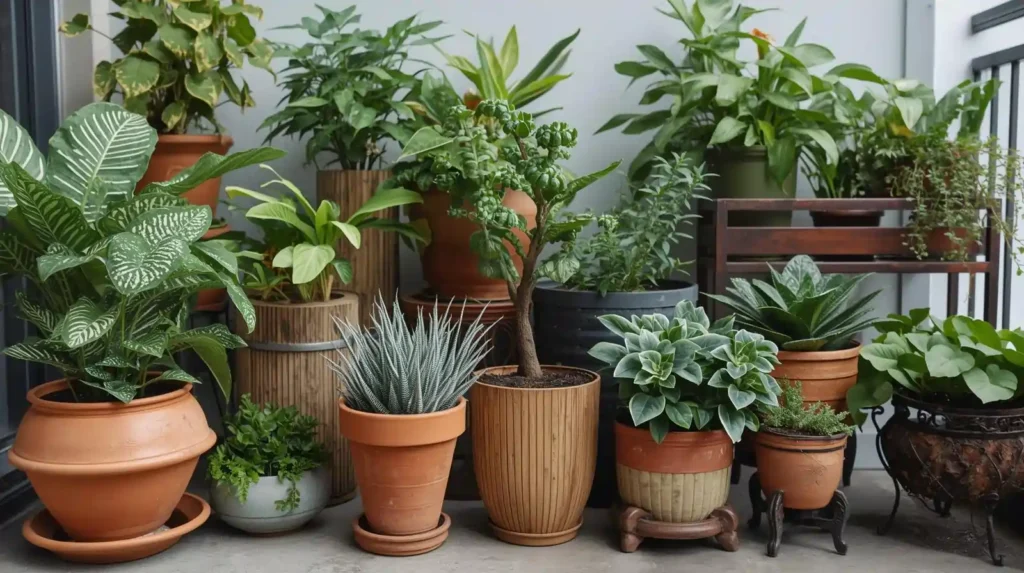
When I started figuring out how to make a vegetable garden on a balcony, I assumed any old pot would do.
The right container and soil can make or break your plants. Here’s what I learned:
1. Pick the right size: My first mistake was planting tomatoes in a shallow pot; the roots had nowhere to grow. Deep containers keep vegetables healthy.
2. Experiment with grow bags: I tried fabric grow bags for chillies and loved how light yet sturdy they were. Plus, they’re perfect for small balconies.
3. Mind the material: Terracotta looked beautiful, but it dried out too fast. Plastic and metal stayed consistent, while wooden planters gave a natural touch.
4. Don’t skimp on soil: Garden soil alone was too heavy and compact. A light potting mix with compost and cocopeat kept plants thriving.
Best Vegetables to Grow on a Balcony
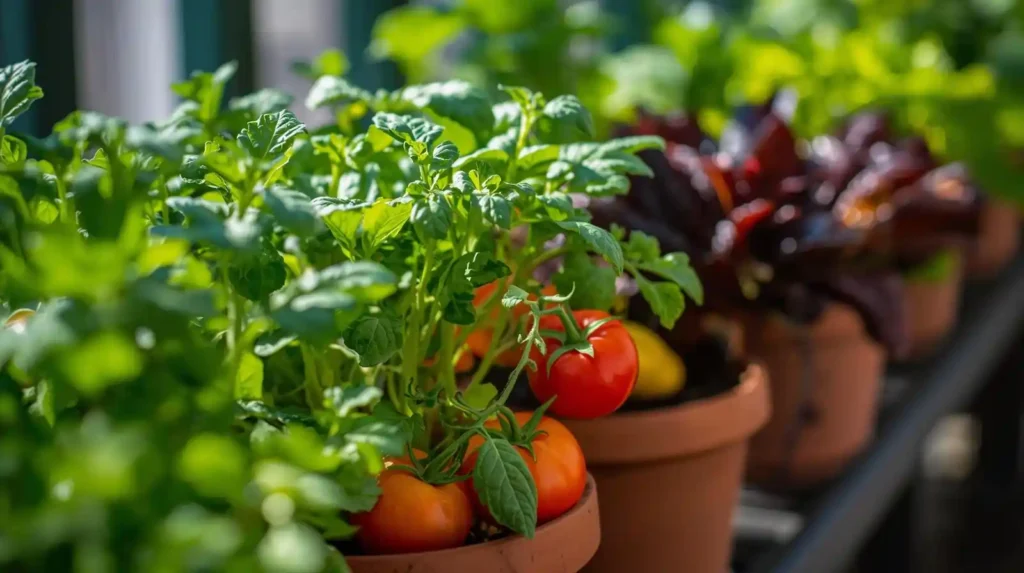
When I finally had my containers and soil ready, the next question hit me: what should I actually plant?
Learning how to make a vegetable garden on a balcony means choosing crops that love pots and small spaces.
Here’s what worked best for me:
1. Leafy greens for beginners: Spinach, lettuce, and kale proliferated and didn’t need deep pots. They were perfect for constant snacking.
2. Herbs everywhere: Basil, mint, coriander. I scattered them in small containers along the railing, and they thrived in partial sun.
3. Compact fruiting plants: Dwarf tomatoes, chili peppers, and bush beans gave me harvests without taking over the balcony.
4. Root vegetables in small pots: Radishes and carrots surprised me with the right soil depth; they did beautifully.
5. Seasonal rotation: I learned to swap crops depending on summer or winter, keeping the balcony green year-round.
Suggested Read: 20 Easy Plants For Apartment Balcony You’ll Actually Love!
Planting and Caring for Your Balcony Vegetables
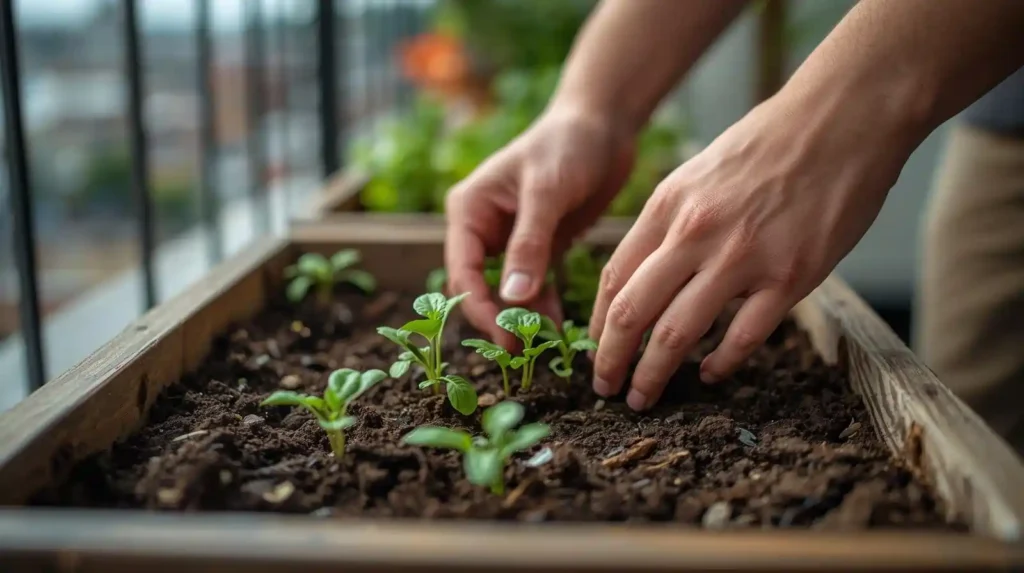
Once I knew what to grow, the real fun and learning began.
Figuring out how to make a vegetable garden on a balcony isn’t just about dropping seeds in soil; it’s about care, timing, and attention.
Here’s what my experience taught me:
1. Sowing and spacing: I learned the hard way that overcrowding stunts growth. Giving each plant enough room made a huge difference.
2. Watering wisely: Overwatering once drowned my seedlings. Using a consistent schedule and checking soil moisture kept them healthy.
3. Fertilizing regularly: I mixed in compost and organic fertilizers every few weeks. Plants rewarded me with greener leaves and tastier harvests.
4. Support for growth: Climbing beans and tomatoes needed stakes or mini trellises; without them, they sprawled and became messy.
5. Observation is key: Daily check-ins helped me catch pests early and notice nutrient deficiencies before they got serious.
Common Balcony Gardening Problems and Solutions
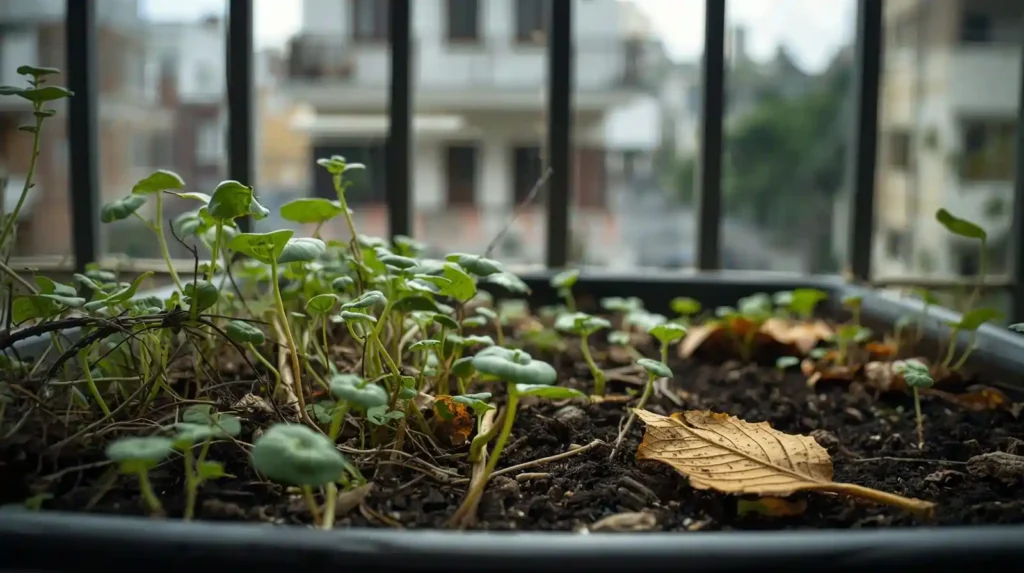
Even after I had everything set, how to make a vegetable garden on a balcony came with its own set of surprises.
No matter how careful you are, small spaces have big challenges. Here’s what I faced and how I solved them:
1. Pests: Aphids and whiteflies once attacked my basil. A gentle spray of soapy water and neem oil saved the day.
2. Root rot and drainage issues: Overwatering in poorly draining pots caused soggy roots. Adding proper trays and a better soil mix solved it.
3. Yellowing leaves: I panicked when my spinach turned yellow. Turns out, it needed extra nitrogen; a sprinkle of compost revived it.
4. Overcrowding: Some plants grew faster than others, spilling into neighboring pots. Regular pruning and spacing adjustments kept the garden manageable.
5. Wind and weather stress: Strong gusts toppled light containers; securing pots and using windbreaks protected the plants.
Suggested Read: I Tried the Ultimate Fall Cleaning Checklist | Here’s What Happened
Inspiring Balcony Vegetable Garden Ideas
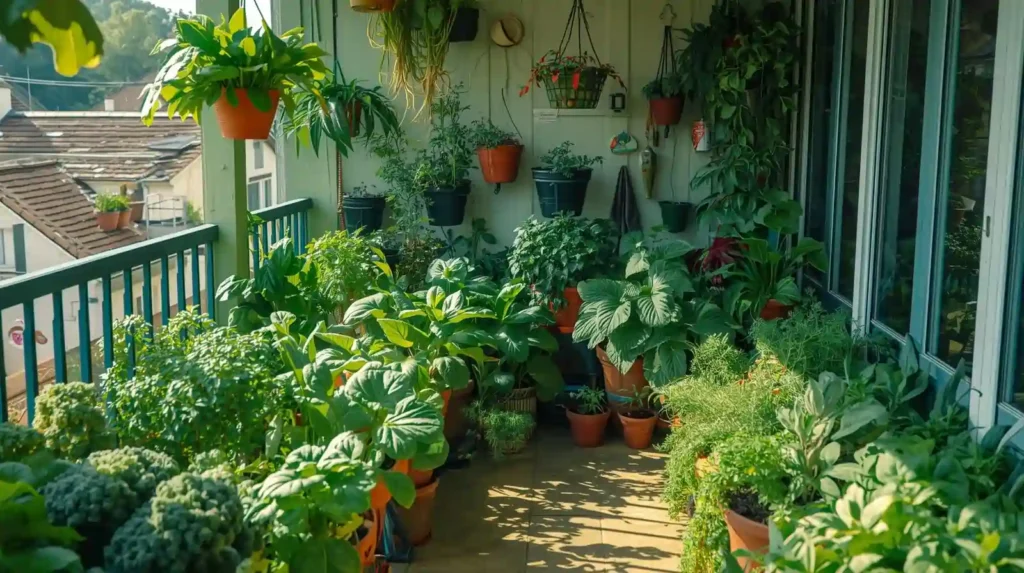
Once I started seeing my little pots flourish, I realized how to make a vegetable garden on a balcony isn’t just about growing food, it’s about creating a space that feels alive and personal.
Here’s what inspired me along the way:
1. Mini herb corners: I dedicated a railing section to mint, basil, and coriander. It became my morning ritual to snip fresh herbs for breakfast.
2. Vertical greenery: Using wall-mounted planters and trellises turned blank walls into living tapestries. It saved space and looked magical.
3. Hanging baskets for trailing plants: Strawberries and cherry tomatoes in hanging pots added color and movement to the balcony.
4. Mix of textures and heights: Combining tall sunflowers with low-growing lettuce created depth and made the balcony feel like a garden retreat.
Personal touches: Little stones, fairy lights, and recycled containers made the garden uniquely mine while keeping it functional.
Suggested Read: 15 Best Indoor Plants For Asthma And Allergies: Try Now!
Harvesting Your Balcony Vegetables
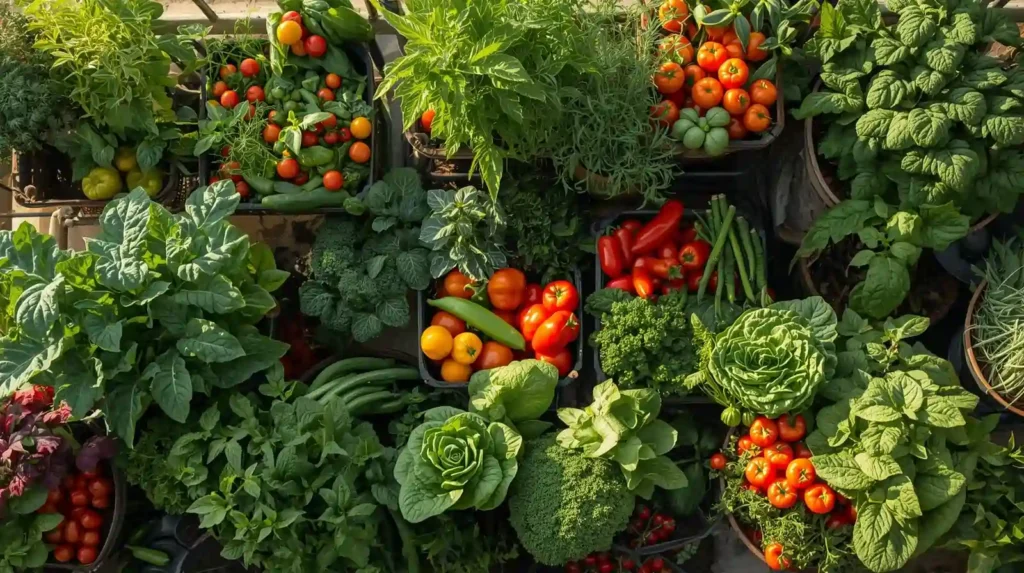
After months of care, the best part of learning how to make a vegetable garden on a balcony finally arrived: harvesting.
Seeing the first ripe tomato or a bunch of crisp lettuce felt like winning a small victory every day.
Here’s what I learned about getting the most out of my balcony garden:
1. Know the right time: Picking leafy greens too late made them bitter; harvesting early kept them tender and flavorful.
2. Encourage continuous growth: Cutting herbs carefully rather than uprooting them ensured they kept producing.
3. Rotate crops: After harvesting radishes, I planted fast-growing spinach in the same pot to keep the balcony green.
4. Handle gently: Small spaces make plants crowded, so I learned to lift fruits carefully to avoid breaking branches.
5. Celebrate every success: Even a single ripe chili felt like a reward for patience and observation.
Suggested Read: 40+ Rare Types Of Snake Plants That Wow Instantly!
Advanced Balcony Gardening Techniques
Once my basic balcony garden was thriving, I started experimenting with ways to make it smarter and more productive.
Learning how to make a vegetable garden on a balcony can go beyond pots and soil; you can embrace modern techniques, too:
1. Hydroponics for small spaces: I tried a simple hydroponic setup for lettuce and herbs. It used less water and grew faster than soil-based pots.
2. Self-watering containers: These were lifesavers during busy weeks. No more worrying about drying soil or overwatering.
3. Smart irrigation systems: A small drip system connected to a timer kept the plants perfectly hydrated even when I was away.
4. Balcony composting: I started a mini compost bin to recycle kitchen scraps, feeding my plants naturally.
5. Modular setups: Stackable trays and vertical towers allowed me to grow more without crowding the balcony floor.
Suggested Read: Do House Plants Attract Bugs? The Surprising Truth Revealed!
growing a small vegetable garden on a balcony
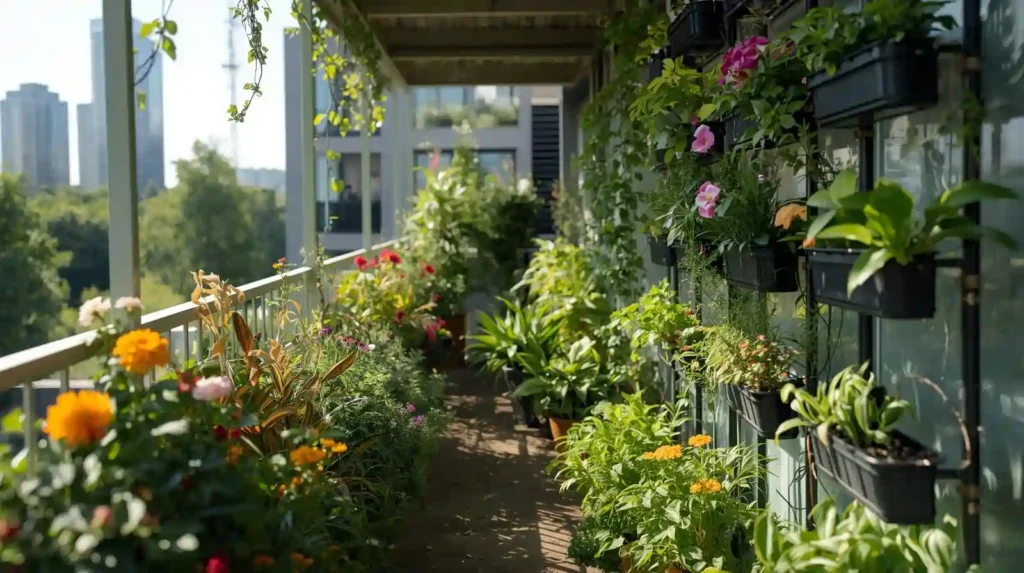
Growing a Small Vegetable Garden on a Balcony I used to think a small balcony could never support a proper garden, until I challenged that idea.
Starting a small vegetable garden on a balcony taught me that creativity matters more than space.
I began by observing the rhythm of the sun throughout the day, noticing where shadows moved and which corners stayed warm.
Then I experimented with unusual container choices:
Hanging mason jars for cherry tomatoes, recycled teapots for herbs, and even a vertical shoe organizer turned into a mini salad patch.
The real magic came from layering plants, tall beans climbing a homemade trellis, bushy spinach at the base, and trailing strawberries weaving through the gaps.
By mixing textures, colors, and growth patterns, my tiny balcony felt lush and alive, proving that even a handful of pots can create a thriving vegetable garden.
How to Make a Kitchen Garden in Balcony
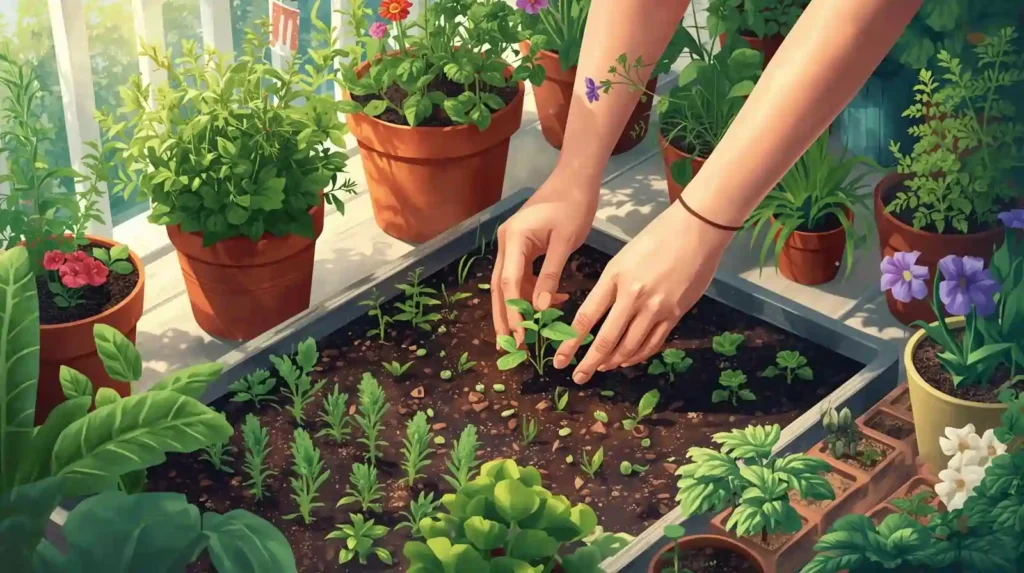
Turning my balcony into a kitchen garden was more rewarding than I imagined.
Learning how to make a kitchen garden in balcony isn’t just about planting vegetables; it’s about creating a space that’s functional, beautiful, and full of life.
Here’s what I discovered along the way:
1. Start with easy-access herbs: I planted basil, coriander, and mint near the kitchen door, so snipping fresh leaves became part of my daily routine.
2. Mix veggies and herbs: Pairing tomatoes with oregano and chili with parsley created natural companions that grew better together.
3. Optimize vertical space: I hung small pots and used tiered shelves to free up the balcony floor while keeping everything within reach.
4. Creative containers: Old mugs, baskets, and even recycled jars became planters, adding character and maximizing space.
5. Layered planting: Taller plants went at the back, low-growing ones in front, creating a mini ecosystem that looked lush and thrived easily.
Suggested Read: How To Get Rid Of Gnats In Plants: 15 Must-Try Hacks!
Endnote

Learning how to make a vegetable garden on a balcony transformed my tiny, pigeon-filled space into a lively green corner.
It taught me patience, creativity, and the joy of watching plants thrive.
As the famous saying goes, “A garden is a grand teacher. It teaches patience and careful watchfulness; it teaches industry and thrift; Above all, it teaches entire trust.”
With a little planning and care, even a small balcony can yield fresh vegetables, fragrant herbs, and daily moments of satisfaction!
Suggested Read: 16 Top Effective Mosquito Repellent Plants Safe For Dogs!

